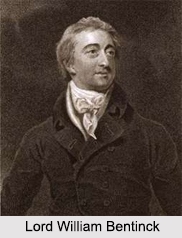 Charter Act of 1833 or Saint Helena Act 1833 was the result of Industrial Revolution in England. This act allowed wider space to the British in the India"s administration. It ended the British India Company`s commercial activities and transformed into the British Crown"s trustee in administering India. Charter Act of 1833 was passed by the British Parliament to renew the charter of East India. This act considered that Indian"s had to function as market for the English mass production on the basis of "Laissez Faire". The Charter Act of 1833 also made the Governor General of Bengal the Governor General of India.
Charter Act of 1833 or Saint Helena Act 1833 was the result of Industrial Revolution in England. This act allowed wider space to the British in the India"s administration. It ended the British India Company`s commercial activities and transformed into the British Crown"s trustee in administering India. Charter Act of 1833 was passed by the British Parliament to renew the charter of East India. This act considered that Indian"s had to function as market for the English mass production on the basis of "Laissez Faire". The Charter Act of 1833 also made the Governor General of Bengal the Governor General of India.
Birth of Charter Act of 1833
Charter Act of 1833 was institutionalised on the basis of liberal concept. It was an Act of the Parliament of the United Kingdom, which gave East India Company the right to rule India for another 20 years. The act legalized the British colonization in India and the territorial possessions of the company.
Features of Charter Act of 1833
•The Governor General of Bengal was made the Governor General of India by the Charter Act of 1833 and he was given all civil and military powers. Thus, this act created a Government of India having all power and authority over the entire nation, which was possessed by the British in India. Lord William Bentinck was the first Governor General of India.
•The Governors of Bombay and Madras were deprived of their legislative powers. Instead, the Government General of India was given some exclusive legislative powers for the entire British India.
•New laws were made under this act, all of which were called Acts. The laws made under previous acts were started to be considered as Regulations.
•Charter Act of 1833 made East Indian Company a purely administrative body ending all the activities of it as a commercial body. It was provided by the act that the company"s territories in India were held by it "in trust for His Majesty, His heirs and successors".
•This act tried to introduce a system of open competition for selection of civil servants. And this act stated that Indians should not be debarred from holding any place, office and employment under the Company. However, this provision was refused after opposition from the Court of Directors.



















